Pulsars make a GPS for the cosmos
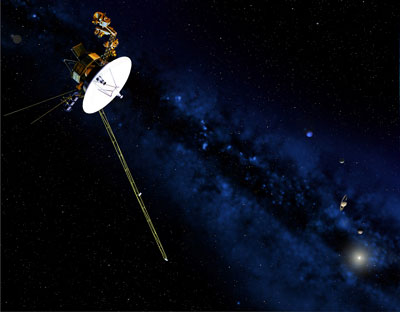 CSIRO scientists have written software that could guide spacecraft to Alpha Centauri, show that the planet Nibiru doesn't exist... and prove that the Earth goes around the Sun.
CSIRO scientists have written software that could guide spacecraft to Alpha Centauri, show that the planet Nibiru doesn't exist... and prove that the Earth goes around the Sun.
Aug 15th, 2013
Read more
 Subscribe to our Space Exploration News feed
Subscribe to our Space Exploration News feed
 CSIRO scientists have written software that could guide spacecraft to Alpha Centauri, show that the planet Nibiru doesn't exist... and prove that the Earth goes around the Sun.
CSIRO scientists have written software that could guide spacecraft to Alpha Centauri, show that the planet Nibiru doesn't exist... and prove that the Earth goes around the Sun.
Aug 15th, 2013
Read more In two NASA-funded studies biofilms grown aboard the International Space Station bound space shuttle were compared with those grown on the ground. The study results show for the first time that spaceflight changes the behavior of bacterial communities.
In two NASA-funded studies biofilms grown aboard the International Space Station bound space shuttle were compared with those grown on the ground. The study results show for the first time that spaceflight changes the behavior of bacterial communities.
Aug 15th, 2013
Read moreJust how stars and black holes in the Universe are able to form from rotating matter is one of the big questions of astrophysics. Now, a new publication by HZDR physicists in Physical Review Letters shows how magnetic fields can also cause turbulences within "dead zones," thus making an important contribution to our current understanding of just how compact objects form in the cosmos.
Aug 15th, 2013
Read moreAn international team of astronomers led by BoMee Lee has established that mature-looking galaxies existed much earlier than previously known, about 11.5 billion years ago.
Aug 14th, 2013
Read more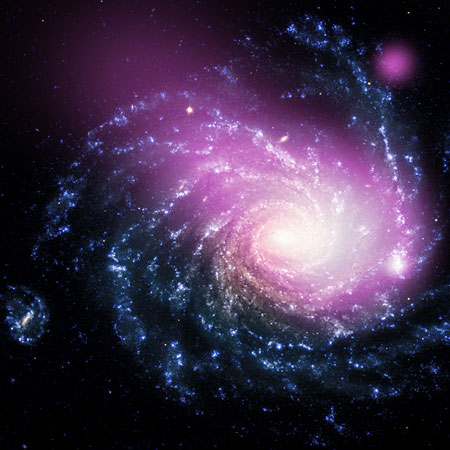 Observations with NASA's Chandra X-ray Observatory have revealed a massive cloud of multimillion-degree gas in a galaxy about 60 million light years from Earth. The hot gas cloud is likely caused by a collision between a dwarf galaxy and a much larger galaxy called NGC 1232.
Observations with NASA's Chandra X-ray Observatory have revealed a massive cloud of multimillion-degree gas in a galaxy about 60 million light years from Earth. The hot gas cloud is likely caused by a collision between a dwarf galaxy and a much larger galaxy called NGC 1232.
Aug 14th, 2013
Read more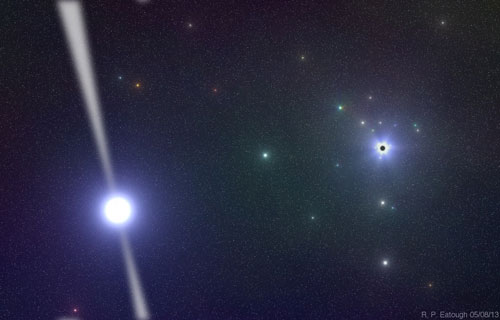 Radio astronomers use pulsar with strong magnetic field to investigate supermassive black hole.
Radio astronomers use pulsar with strong magnetic field to investigate supermassive black hole.
Aug 14th, 2013
Read more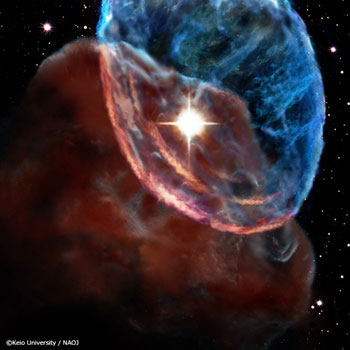 A research team has succeeded in precisely measuring the expansion velocity of a shockwave of the supernova remnant W44.
A research team has succeeded in precisely measuring the expansion velocity of a shockwave of the supernova remnant W44.
Aug 13th, 2013
Read more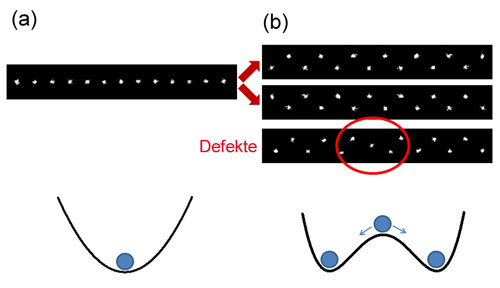 Scientists used laser-cooled ions in so-called 'ion Coulomb crystals'. They were able to show for the first time how symmetry breaking can be generated in a controlled manner and how the occurrence of defects can then be observed.
Scientists used laser-cooled ions in so-called 'ion Coulomb crystals'. They were able to show for the first time how symmetry breaking can be generated in a controlled manner and how the occurrence of defects can then be observed.
Aug 12th, 2013
Read more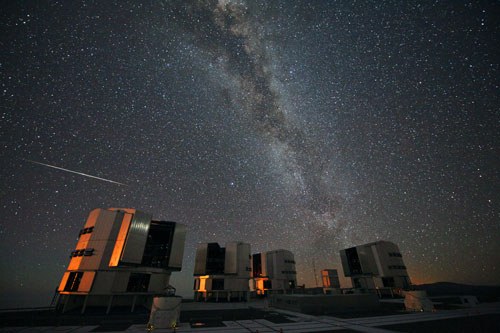 The evening of 12 August and morning of 13 August see the annual maximum of the Perseids meteor shower. This year prospects for watching this natural firework display are particularly good.
The evening of 12 August and morning of 13 August see the annual maximum of the Perseids meteor shower. This year prospects for watching this natural firework display are particularly good.
Aug 9th, 2013
Read more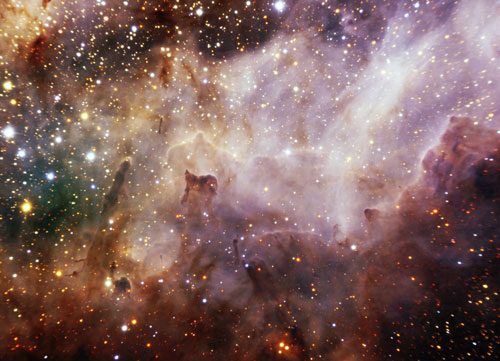 Gemini Observatory's latest instrument, a powerful infrared camera and spectrograph at Gemini South, reveals its potential in a series of striking on-sky commissioning images released today.
Gemini Observatory's latest instrument, a powerful infrared camera and spectrograph at Gemini South, reveals its potential in a series of striking on-sky commissioning images released today.
Aug 9th, 2013
Read more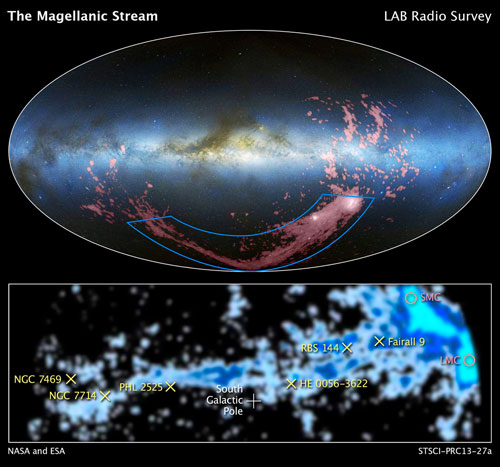 Astronomers using NASA's Hubble Space Telescope have solved a 40-year mystery on the origin of the Magellanic Stream, a long ribbon of gas stretching nearly halfway around our Milky Way galaxy.
Astronomers using NASA's Hubble Space Telescope have solved a 40-year mystery on the origin of the Magellanic Stream, a long ribbon of gas stretching nearly halfway around our Milky Way galaxy.
Aug 8th, 2013
Read moreEuropa, the ice-covered moon of the planet Jupiter, may be able to support life. NASA has commissioned a team of expert scientists to consider the science goals for a landed spacecraft mission to the surface of Europa, and to investigate the composition and geology of its icy shell and the potential for life within its interior ocean.
Aug 7th, 2013
Read more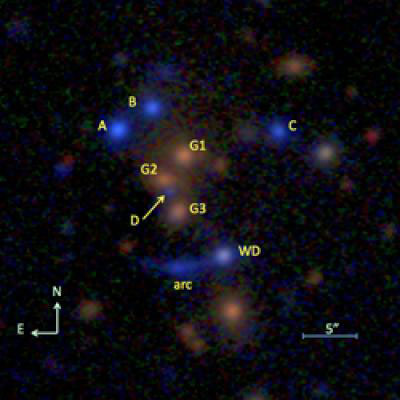 Quasars are active black holes -- primarily from the early universe. Using a special method where you observe light that has been bent by gravity on its way through the universe, a group of physics students from the Niels Bohr Institute have observed a quasar whose light has been deflected and reflected in six separate images. This is the first time a quasar has been observed with so many light reflections.
Quasars are active black holes -- primarily from the early universe. Using a special method where you observe light that has been bent by gravity on its way through the universe, a group of physics students from the Niels Bohr Institute have observed a quasar whose light has been deflected and reflected in six separate images. This is the first time a quasar has been observed with so many light reflections.
Aug 7th, 2013
Read more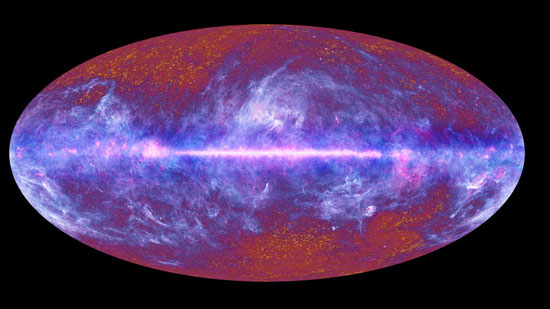 A new analysis of cosmic microwave background radiation data by researchers with the Lawrence Berkeley National Laboratory has taken the furthest look back through time yet - 100 years to 300,000 years after the Big Bang - and provided tantalizing new hints of clues as to what might have happened.
A new analysis of cosmic microwave background radiation data by researchers with the Lawrence Berkeley National Laboratory has taken the furthest look back through time yet - 100 years to 300,000 years after the Big Bang - and provided tantalizing new hints of clues as to what might have happened.
Aug 7th, 2013
Read more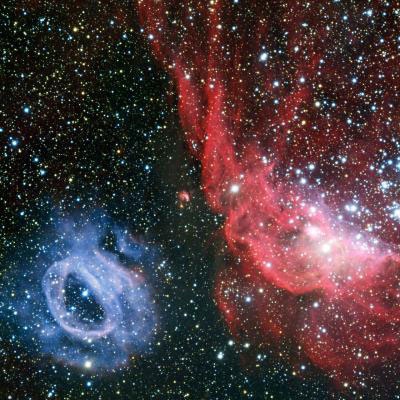 ESO's Very Large Telescope has captured an intriguing star-forming region in the Large Magellanic Cloud - one of the Milky Way's satellite galaxies. This sharp image reveals two distinctive glowing clouds of gas: Red-hued NGC 2014, and its blue neighbour NGC 2020. While they are very different, they were both sculpted by powerful stellar winds from extremely hot newborn stars that also radiate into the gas, causing it to glow brightly.
ESO's Very Large Telescope has captured an intriguing star-forming region in the Large Magellanic Cloud - one of the Milky Way's satellite galaxies. This sharp image reveals two distinctive glowing clouds of gas: Red-hued NGC 2014, and its blue neighbour NGC 2020. While they are very different, they were both sculpted by powerful stellar winds from extremely hot newborn stars that also radiate into the gas, causing it to glow brightly.
Aug 7th, 2013
Read moreSomething big is about to happen on the sun. According to measurements from NASA-supported observatories, the sun's vast magnetic field is about to flip.
Aug 6th, 2013
Read more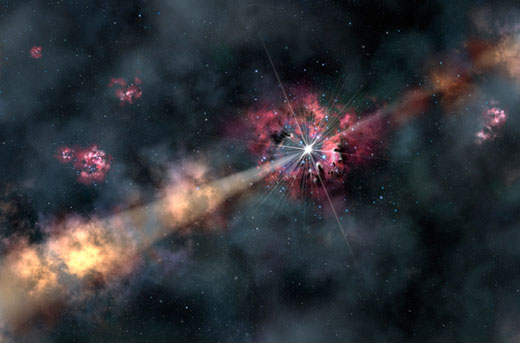 More than 12 billion years ago a star exploded, glowing so brightly that it outshone its entire galaxy by a million times. This brilliant flash traveled across space for 12.7 billion years to a planet that hadn't even existed at the time of the explosion -- our Earth. By analyzing this light, astronomers learned about a galaxy that was otherwise too small, faint and far away for even the Hubble Space Telescope to see.
More than 12 billion years ago a star exploded, glowing so brightly that it outshone its entire galaxy by a million times. This brilliant flash traveled across space for 12.7 billion years to a planet that hadn't even existed at the time of the explosion -- our Earth. By analyzing this light, astronomers learned about a galaxy that was otherwise too small, faint and far away for even the Hubble Space Telescope to see.
Aug 6th, 2013
Read more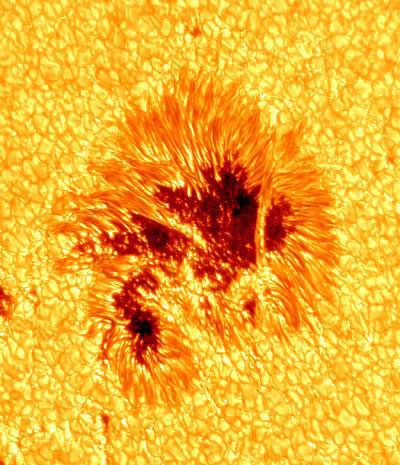 Researchers at NJIT's Big Bear Solar Observatory in Big Bear, Calif., have obtained new and remarkably detailed photos of the sun with the New Solar Telescope. The photographs reveal never-before-seen details of solar magnetism revealed in photospheric and chromospheric features.
Researchers at NJIT's Big Bear Solar Observatory in Big Bear, Calif., have obtained new and remarkably detailed photos of the sun with the New Solar Telescope. The photographs reveal never-before-seen details of solar magnetism revealed in photospheric and chromospheric features.
Aug 6th, 2013
Read more